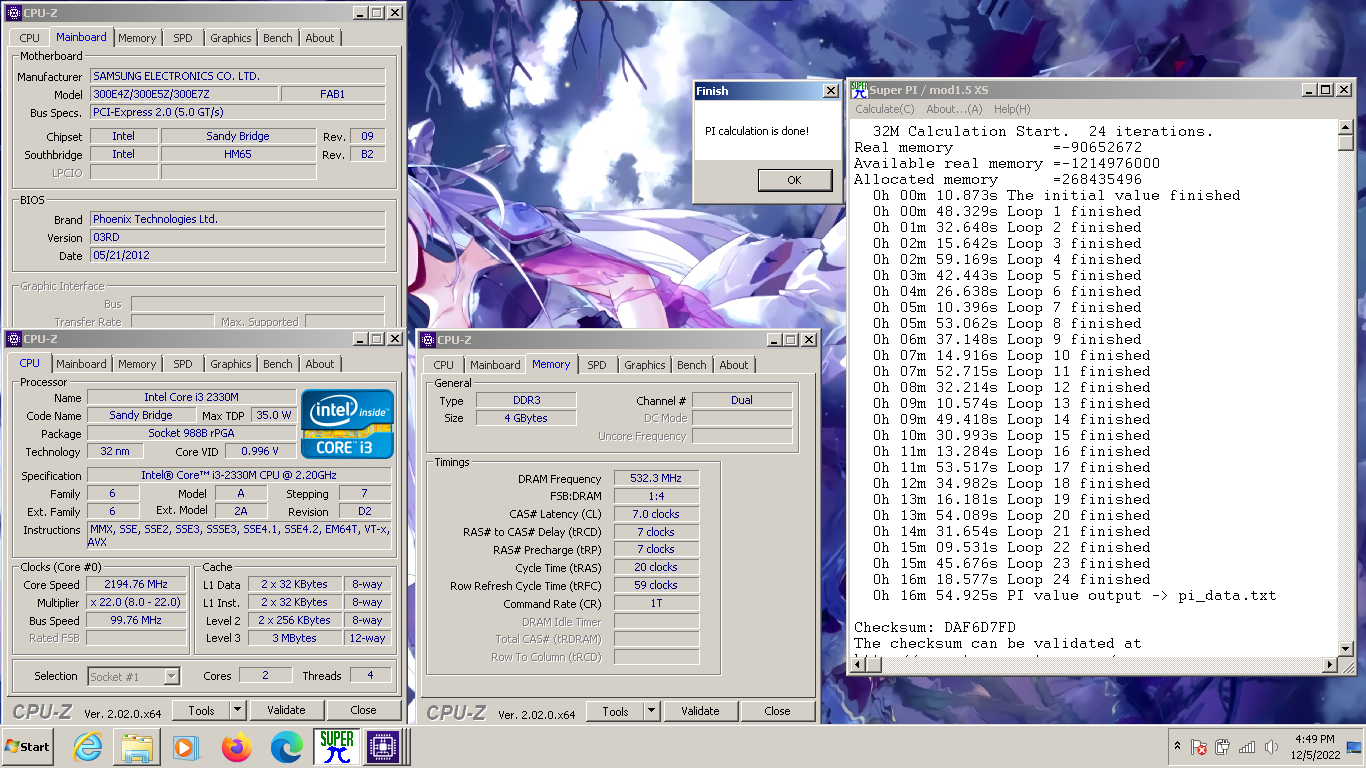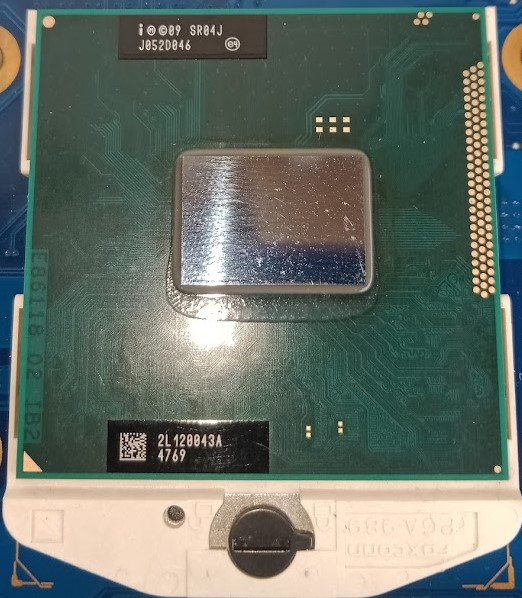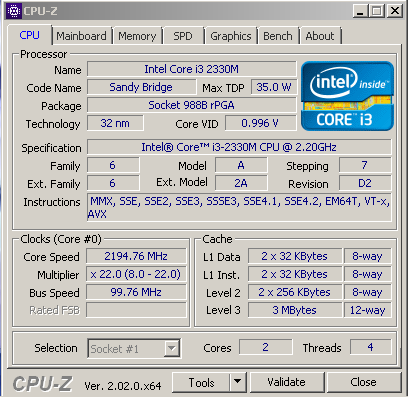SuperPi - 32M score 16min 54sec 925ms with a i3-2330M
Thursday, 01 January 1970 07:00 | Update at null
Media Gallery
Screenshot

Device, Setup, etc



URL
https://hwbot.org/submission/5138294-
Information Detail
Hardware: Intel Core i3 2330M
Specs:CPUID : Intel(R) Core(TM) i3-2330M CPU @ 2.20GHz
Architecture : x86
Codename : Sandy Bridge
L3 Cache : 3MB
Clock : 2.20GHz
Core/Thread : 2/4
TDP : 35W
Technology : 32nm
Socket : PPGA988
IGPU : Intel HD Graphics 3000 Mobile
See more specification...
Software: SuperPi - 32M
Score: 16min 54sec 925ms
About: SuperPi - 32MSuperPi - 32M is one of the most popular classic benchmarks for measuring processor performance in single-threaded scenarios. This benchmark calculates the value of π (pi) to 32 million decimal places, which is a computationally intensive task and highly sensitive to single-core CPU speed and overall system efficiency.
SuperPi uses the computationally intensive Gauss-Legendre algorithm, so it takes a considerable amount of time to complete the 32M-digit calculation. For this reason, the benchmark is widely used by overclockers, reviewers, and hardware enthusiasts to test system stability, RAM tuning, cooling efficiency, and high clock speed performance.
Key Features of SuperPi - 32M:
- Measures single-core CPU performance: Focuses on the efficiency and speed of a single processor core.
- Emphasizes system stability: Ideal for testing overclock stability, temperature, and long-term performance.
- Classic and standardized benchmark: Widely recognized in the overclocking community and benchmark competitions.
- Sensitive to system configuration: Includes RAM latency, timing, and storage speed if swap is used.
The purpose of SuperPi - 32M:
SuperPi - 32M provides a realistic picture of how your CPU performs in scenarios that demand high performance from a single thread. This is crucial in real-world scenarios because many lightweight applications, older programs, and some modern game elements still run in a single-threaded manner. The faster the CPU completes this test, the more efficient your system is for light to medium-duty tasks.
The Intel Core i3-2330M is a dual-core mobile processor launched in 2011 as part of Intel’s second-generation Sandy Bridge lineup. Designed for mid-range laptops, this processor features 2 cores and 4 threads thanks to Intel Hyper-Threading Technology, allowing it to handle light to moderate multitasking workloads efficiently. Operating at a fixed clock speed of 2.2 GHz and built on the 32nm process, the i3-2330M does not include Intel Turbo Boost, which limits its ability to dynamically increase performance under heavier loads, but it remains a solid choice for everyday use.
With a TDP of 35W, the i3-2330M balances power consumption and performance reasonably well for its era. It integrates Intel HD Graphics 3000, a GPU with a base clock of 650 MHz and a dynamic frequency up to 1.1 GHz. While not designed for modern gaming or demanding graphic applications, this integrated GPU handles HD video playback, basic 3D rendering, and older or lightweight games at low settings with relative ease. Users looking for casual computing and multimedia playback will find it sufficient.
In real-world usage, the Core i3-2330M performs well for standard computing tasks such as web browsing, streaming, office productivity (e.g., Word, Excel), and simple photo editing. Its Hyper-Threading capabilities give it a performance edge over older dual-core processors that lack thread duplication. However, the lack of Turbo Boost and a relatively low base frequency mean that it can struggle under CPU-intensive workloads like video rendering or large spreadsheet processing, especially when compared to more modern CPUs.
This specific configuration was tested on a SAMSUNG 300E4Z, a laptop originally shipped with an Intel Celeron B815 processor but later upgraded to the i3-2330M for better performance. With 4GB of DDR3 dual-channel memory and Windows 7 installed, the system runs smoothly for basic daily use, making the i3-2330M a practical upgrade option for budget-conscious users seeking improved performance without replacing their entire system.
Hardware Detail:
Device: SAMSUNG 300E4Z (This device originally used Celeron B815 which was upgraded to i3 2330M.)
RAM: 4GB DDR3 Dual Channel
OS: Windows 7
* Not Avaiable
